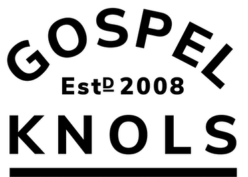I am currently reading a book titled: The Power of Habits. The attached pdf illustrates one of the powerful lessons or universal principles of developing habits. The author tells the story of Michael Phelps swimming the 200 meter butterfly in the Beijing Olympics. On the 3rd of 4 lengths, his goggles filled up with water which rendered him blind. He didn’t panic, he simply remembered that his coach had primed him on how to handle such emergencies during his practice sessions (myelination). His coach would often turn the lights out during his practice routines so Phelps would in effect be swimming blind. No black line on the bottom of the pool to follow and no ability to see the competitors peripherally.
Therefore, when Phelps was unable to see, he remembered swimming in the dark and counted his strokes before the wall. He followed a very well trodden path (think red and green paths) and won the gold medal while swimming blind.
Here is how habits and addictions work.
First habits:
- Cue
- a Cue is a behavior, an action, or an event that indicates something is happening or will happen.
- water filled Phelps’s goggles. Your dad yells at you. Your companion is being a jerk and doesn’t clean up after dinner.
- it starts a process that does not necessarily include your frontal cortex.
- Routine
- the actions you take once the cue has been received or noticed
- habits are a series of routines
- going to be at night is a routine. At 9:30 pm, as missionaries, you start preparing for bed, brush teeth, wash face, write in journal, read scriptures, pray.
- Reward
- the reward is the result of the routine.
- feel good, the Spirit is present. Potential revelation during sleep or while laying in bed.
- Restful sleep, able to work diligently the next day.
In order to change a habit or transform behavior, the routine must change. Nothing else. One cannot change the cue, for that is setting expectations of one’s environment and leads to frustration. When a habit becomes compulsive, it turns into an addiction and the pattern looks like this.
- Trigger
- instead of a cue, one is triggered by a behavior, action, comment, or a circumstance
- companion doesn’t do his job, wife nags, husband doesn’t put the cereal away, child doesn’t clean his room
- after being triggered, the cortex is not invited to the party, the amygdala hijacks behavior
- Act out
- the brain is now programmed to avoid pain or elicit pleasure
- the behavior is a habit or a routine that plays over and over again based on the trigger and the level of existing pain (burn zone)
- my companion didn’t clean up the dinner mess, so I become angry, yell, shut down, man cave, use sharp words, sarcasm or criticism
- Consequence
- the by-product of acting out
- the para-sympathetic systems shuts down, hinders the digestive tract, the healing properties of the body, and blurs cognitive thought.
- lose the Spirit, don’t sleep well, in a bad mood for the next two days, ineffective as a missionary
The process of changing behavior is understanding (being aware) one’s triggers. Once the triggers are understood, one regulates (will power, desire) a new routine. Studies show that writing down the new routine is significant in changing behavior. Those who neglect to write down the new routine, rarely succeed. By writing it down and then myelinating it over and over again in your mind, transformation has a higher probability of success.

I have been working toward this end this week. I am grateful for this post. I am currently begining a new routine with my children for the summer including an effort to run my home similar to what will be for my son on his mission. My children all groan when I say cheerfully, “We are all attending the MTC right here at home!!”. But it is too easy to slip out of the habits I am attempting to form. Thanks for this information. It allows me to push forward. T~
Best of success with your MTC experience President Tawnya.